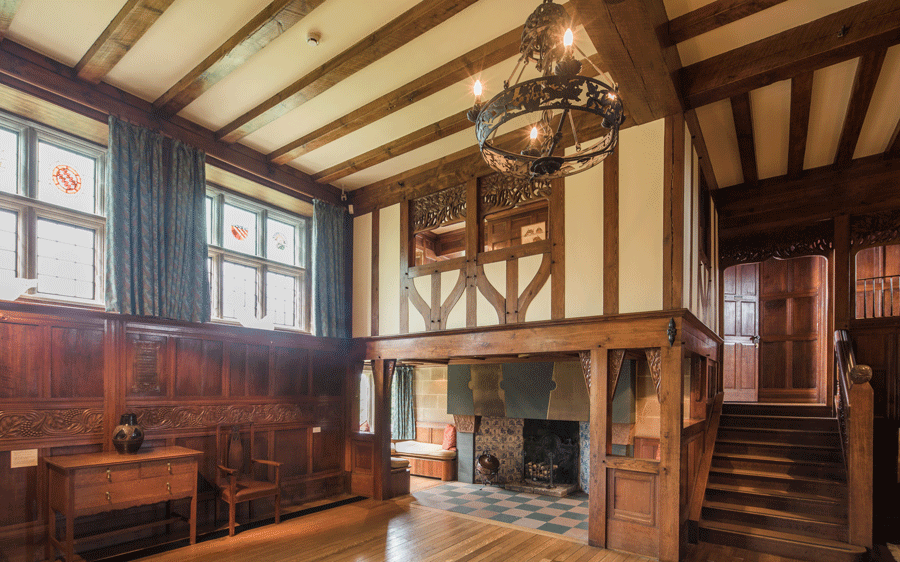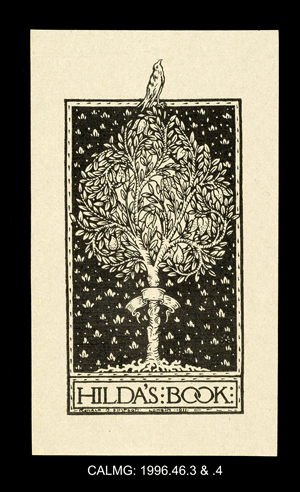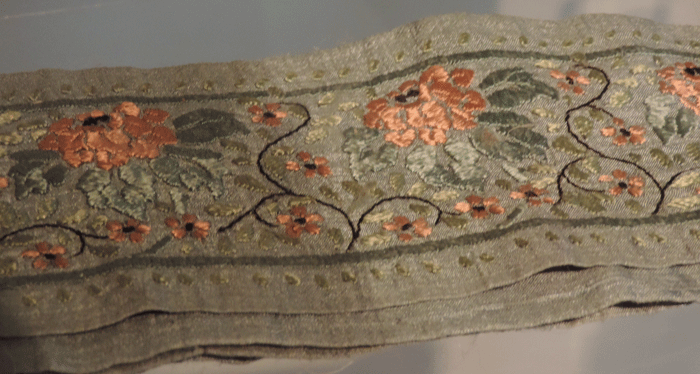Cumbrian Crafts family featured in Blackwell exhibition
 A family of skilled artisans in the Arts & Crafts movement are being celebrated in a new exhibition at Blackwell, the Arts & Crafts House on the shores of Lake Windermere. The exhibition features the work of Arthur Simpson and his talented family who became one of the most creative family enterprises both in Cumbria and Arts & Crafts history.
A family of skilled artisans in the Arts & Crafts movement are being celebrated in a new exhibition at Blackwell, the Arts & Crafts House on the shores of Lake Windermere. The exhibition features the work of Arthur Simpson and his talented family who became one of the most creative family enterprises both in Cumbria and Arts & Crafts history.
The exhibition, which opened on 21st September, 2018 and runs until 6th January, 2019, features several unseen pieces from private collections, bringing together a beautiful collection of leatherwork, furniture, wood carving, textiles, embroidery and original drawings and designs.
Arthur (born Cumbria 1857) became one of the master craftsmen of the era and together with his talented family he became well known in the county although somewhat overlooked in the wider story of the Arts & Crafts movement. He worked with some of the architectural masters of the time including Baillie Scott and C.F.A. Voysey, producing full ranges of furniture.
 (above) The Simpsons family stamp ©Tullie House Museum
(above) The Simpsons family stamp ©Tullie House Museum
Curated by Chelsea Eves, this is the first major exhibition of the Simpson family as a whole and includes personal items made by family members for each other and a design for a carving at Blackwell. There are also items on loan from Tullie House Museum and Art Gallery in Carlisle.
Arthur showed an early flair for wood-carving, working in London before returning to establish his famous handicrafts workshop in Kendal and showroom in Windermere. The furniture has clean simple lines and found a ready market locally. Much of the woodwork in Blackwell was created by the hands of Arthur Simpson. He was also an astute businessman and had an eye on the future and he realised how important it was to pass on his skills to his children, encouraging them to have an artistic outlook. They, in turn, became a creative force.
Arthur’s wife, Jane Simpson, despite a lack of prior experience, found herself to be a natural at embroidery, a skill she handed down to their daughter Hilda. Jane was a friend of Ann Macbeth, designer, teacher, author and a member of the Glasgow Movement, who also taught Jane to decorate pottery. Like Jane, daughter Hilda’s designs were inspired by flowers and she also produced delicate needlework for small items until her sight began to fail forcing her to discontinue close work. Both women loved their garden at Littleholme in Kendal and the floral influences can be seen in many aspects of their work.
Both sons became apprentices under their father’s guidance with Hubert going on to secure the business well into the 1950s.
The Arts & Crafts movement became a reaction to the mass produced products of the Industrial Revolution and Victorian over-elaborate design. In her excellent book ‘The Arts and Crafts Movement in Britain‘, Mary Greensted points out that the movement was based on functional design and on the human desire to make things.
The natural world influenced the movement and in turn this had an important significance on garden design as well as architecture.
 You can see the brilliance of flowers from the garden in many of the designs on show particularly the delightful tea cosy (left) and the beautiful lace collars. There was nothing that this talented family could not turn their hand to, from chair backs, stools, leatherwork and embroidery to book covers and functional household items.
You can see the brilliance of flowers from the garden in many of the designs on show particularly the delightful tea cosy (left) and the beautiful lace collars. There was nothing that this talented family could not turn their hand to, from chair backs, stools, leatherwork and embroidery to book covers and functional household items.
 Although Arthur’s work has been exhibited before, this is the first time an exhibition of work by the Simpson as a whole family has been presented at Blackwell and it gives a fascinating insight into their work and influence on the Arts and Crafts movement both locally and nationally.
Although Arthur’s work has been exhibited before, this is the first time an exhibition of work by the Simpson as a whole family has been presented at Blackwell and it gives a fascinating insight into their work and influence on the Arts and Crafts movement both locally and nationally.
Curator Chelsea Eves, points out that Arthur Simpson was one of the best carvers of his day: “The workmanship put into his furniture was truly outstanding. There is so much passion in his work,” she said. “It’s remarkable that each of the family of five were hugely talented in their own right. And under the stewardship of Simpson they worked collaboratively. But while they had notoriety in Cumbria, The Simpsons were overlooked elsewhere and little is written about them in the annals of Arts & Crafts history,” Chelsea added.
Chelsea is delighted to be able to tell the family story for the first time, not only focusing on their creative work but also looking at who they were.
For more information please visit: https://www.blackwell.org.uk/items/simpsonsfamily
picture credits: Hilda’s Book (pictured right above) ©Tullie House Museum and Art Gallery, Banner Minstrels Gallery ©Lakeland Arts.


